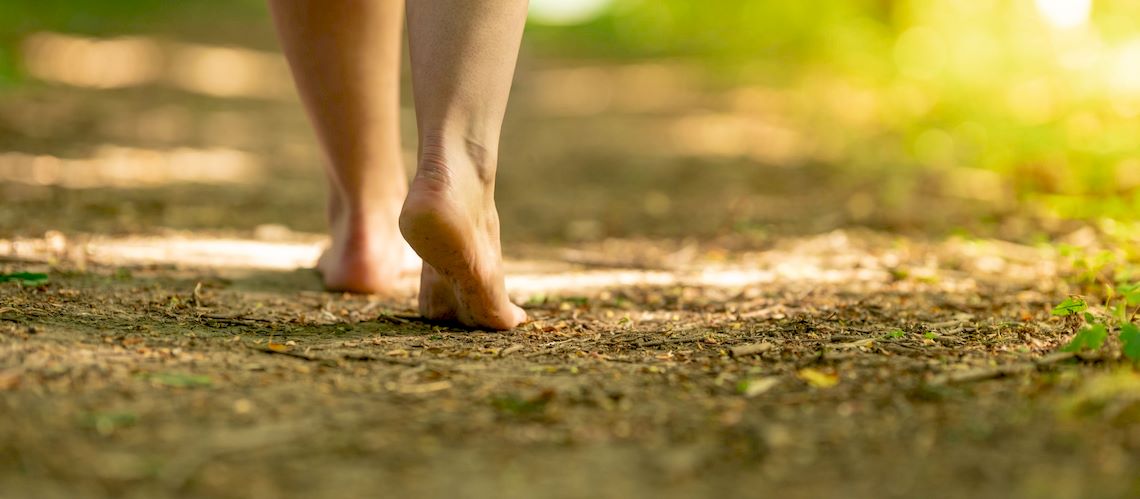Earthing, also known as grounding, refers to the practice of making direct physical contact with the Earth’s surface to harness its natural electric charge. Advocates of earthing suggest that this practice offers a range of health benefits, including reduced inflammation, improved sleep, enhanced athletic performance, and overall well-being. This article examines these claims through the lens of scientific research, providing a detailed exploration of how earthing might contribute to better health and athletic performance.
Definition
Earthing involves connecting the body to the Earth’s electrons by walking barefoot outside, or by sitting, lying, or sleeping on conductive systems connected to the Earth. The premise is that the Earth’s electrons can transfer to the human body, neutralizing free radicals and reducing inflammation. This concept is rooted in the idea that modern lifestyles have disconnected us from this natural energy, potentially contributing to various health issues (Chevalier et al., 2012).
History and Origins
The concept of earthing has ancient roots, as humans historically maintained regular contact with the Earth’s surface through activities like walking barefoot and sleeping on the ground. However, the advent of modern footwear and insulated living environments has largely severed this connection. The scientific exploration of earthing began in the late 20th century, with researchers investigating its potential health benefits. Initial studies, including those published in the Journal of Environmental and Public Health, have sparked interest in grounding as a complementary health practice (Oschman, Chevalier, & Brown, 2015).
Principles and Concepts
- Electron Transfer: Direct contact with the Earth allows electrons to transfer to the body, potentially neutralizing free radicals and reducing oxidative stress. This electron transfer is hypothesized to have anti-inflammatory effects, which could be beneficial in reducing chronic inflammation (Oschman, 2007).
- Inflammation Reduction: Grounding has been associated with decreases in inflammation by balancing the body’s electrical charge. Studies suggest that earthing may influence physiological processes such as the regulation of cortisol, a stress hormone linked to inflammation (Brown et al., 2010).
- Improved Sleep and Stress Relief: Contact with the Earth’s surface has been shown to improve sleep patterns and reduce stress by regulating cortisol levels and synchronizing the body’s circadian rhythms (Ghaly & Teplitz, 2004). This connection to the Earth’s natural rhythms may explain some of the reported benefits in sleep and stress management.
- Enhanced Athletic Recovery: Emerging research suggests that earthing may accelerate recovery in athletes by reducing exercise-induced inflammation and improving blood flow. This can help athletes recover faster from intense physical activity and maintain peak performance levels (Brown, Chevalier, & Hill, 2010).
Benefits
Earthing is associated with several potential health benefits, supported by scientific research:
- Reduced Inflammation and Pain: Studies indicate that grounding can lead to significant reductions in inflammation and pain, particularly in conditions involving chronic inflammation, such as arthritis (Ober, 2014).
- Improved Sleep Quality and Patterns: Research shows that grounding can improve sleep quality by regulating circadian rhythms and reducing nighttime cortisol levels, leading to more restful and consistent sleep (Ghaly & Teplitz, 2004).
- Enhanced Immune Function: Some studies suggest that earthing may enhance immune function by reducing stress and inflammation, thereby supporting the body’s natural defenses (Chevalier et al., 2012).
- Increased Energy Levels: Anecdotal reports and preliminary research suggest that regular grounding practices may increase energy levels, possibly due to improved sleep and reduced stress (Ober, 2014).
- Stress Relief and Improved Mood: By regulating cortisol and promoting a sense of connection with nature, earthing may contribute to stress relief and improved mood, making it a useful practice for managing anxiety and depression (Ghaly & Teplitz, 2004).
- Improved Athletic Performance and Recovery: Some elite athletes have adopted earthing as part of their recovery regimen. For instance, a study by Brown, Chevalier, and Hill (2010) found that earthing significantly reduced delayed onset muscle soreness (DOMS) and accelerated recovery after intense physical exertion. Anecdotal reports from professional athletes, including Tour de France cyclists and NFL players, suggest that earthing helps in reducing inflammation, speeding up recovery, and improving overall athletic performance.
Applications
Earthing can be used to address various conditions and goals:
- Chronic Pain and Inflammation Management: Individuals with chronic pain conditions, such as arthritis or fibromyalgia, may benefit from regular grounding practices, which can help reduce pain and inflammation (Oschman, 2007).
- Improved Sleep and Stress Reduction: Those struggling with sleep disturbances or high stress levels may find that earthing helps regulate sleep patterns and reduce anxiety (Ghaly & Teplitz, 2004).
- Enhanced Recovery from Physical Exertion: Athletes and active individuals may use earthing as a tool for faster recovery after physical exertion, potentially reducing muscle soreness and inflammation (Brown, Chevalier, & Hill, 2010).
- Overall Health and Vitality Improvement: Incorporating earthing into daily routines may support general health and vitality, particularly by improving sleep and reducing stress (Ober, 2014).
Scientific Evidence
A growing body of research supports the efficacy of earthing in various health applications. For example, a study published in the Journal of Environmental and Public Health reported significant reductions in inflammation and pain among participants who practiced regular grounding (Oschman, Chevalier, & Brown, 2015). Another study highlighted the benefits of earthing for improved sleep and reduced stress, showing that participants who engaged in grounding had better sleep patterns and lower cortisol levels (Ghaly & Teplitz, 2004). Additionally, research on athletes suggests that earthing can enhance recovery times and reduce muscle soreness, making it a valuable tool for those engaged in high levels of physical activity (Brown, Chevalier, & Hill, 2010).
How to Get Started
- Direct Contact: Walk barefoot on natural surfaces such as grass, sand, or soil to maximize your connection with the Earth.
- Use Grounding Products: Utilize grounding mats, sheets, or pads that are designed to connect to the Earth’s electric field, allowing you to practice earthing indoors.
- Regular Practice: Incorporate earthing into your daily routine to experience consistent benefits. Aim for at least 30 minutes of grounding each day.
- Monitor Your Health: Keep track of changes in your health and well-being as you practice earthing regularly. Note improvements in sleep, stress levels, and any reduction in pain or inflammation.
Case Studies or Testimonials
Many individuals, including elite athletes, report significant improvements in their physical and emotional health through regular earthing practices. For instance, Tour de France cyclists and NFL players have used grounding techniques such as sleeping on grounding sheets to enhance recovery during intense training and competition. These athletes have reported reduced inflammation, quicker muscle recovery, and better sleep, all of which are critical for maintaining peak performance (Brown, Chevalier, & Hill, 2010; Ober, 2014).
Conclusion
Earthing is a simple, natural, and effective practice for enhancing physical health and well-being. By reconnecting with the Earth’s natural electric charge, individuals can experience benefits such as reduced inflammation, improved sleep, enhanced recovery, and overall health. Incorporating earthing into your wellness routine may lead to profound improvements for both body and mind, especially for those engaged in athletic activities.
References
- Brown, D., Chevalier, G., & Hill, M. (2010). Pilot Study on the Effect of Grounding on Delayed-Onset Muscle Soreness. Journal of Alternative and Complementary Medicine, 16(3), 265-273.
- Chevalier, G., Sinatra, S. T., Oschman, J. L., Sokal, K., & Sokal, P. (2012). Earthing: Health Implications of Reconnecting the Human Body to the Earth’s Surface Electrons. Journal of Environmental and Public Health, 2012.
- Ghaly, M., & Teplitz, D. (2004). The Biological Effects of Grounding the Human Body During Sleep as Measured by Cortisol Levels and Subjective Reporting of Sleep, Pain, and Stress. Journal of Alternative and Complementary Medicine, 10(5), 767-776.
- Ober, C. (2014). Earthing: The Most Important Health Discovery Ever?. Basic Health Publications.
- Oschman, J. L. (2007). Charge Transfer in the Living Matrix. Journal of Bodywork and Movement Therapies, 11(2), 111-123.
- Oschman, J. L., Chevalier, G., & Brown, R. (2015). The Effects of Grounding (Earthing) on Inflammation, the Immune Response, Wound Healing, and Prevention and Treatment of Chronic Inflammatory and Autoimmune Diseases. Journal of Inflammation Research, 8, 83-96.




